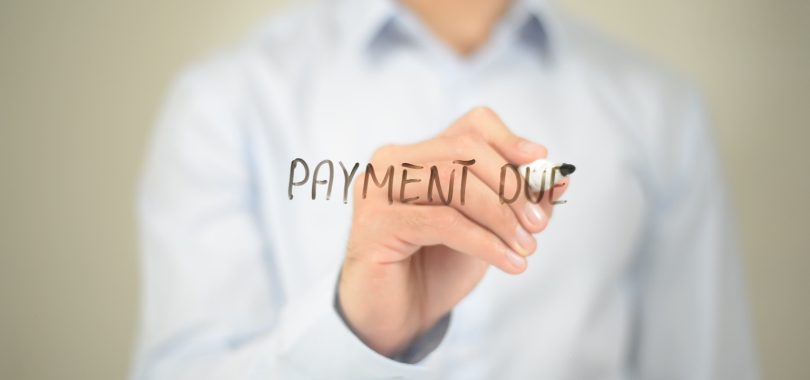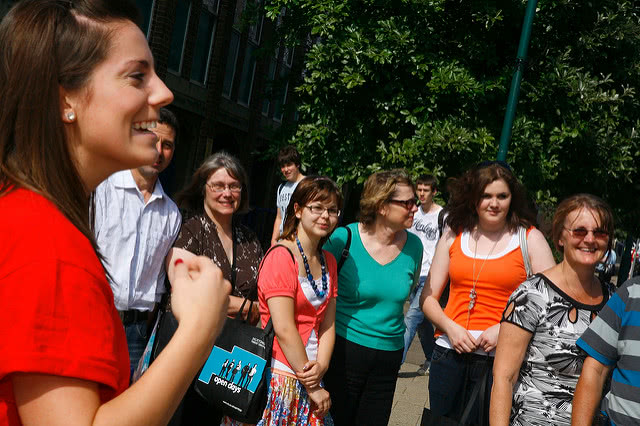You’ve definitely heard by now that the student loan pause has been extended yet again – this time to May 1, 2022. This great news for anyone who’s still paying off their federal student loans!
The federal government had first initiated the Student Loan Repayment Freeze in mid-2020. The aim was to offer relief to federal student loan borrowers whose income had been hit by the coronavirus pandemic.
After extending the pause several times, payments were set to resume after January 31, 2022, in what was described earlier as the final extension. In a surprise announcement on December 21, 2021, President Joe Biden announced that his administration would extend the student loan moratorium yet again.
Here’s a look at why the student loan pause extension is good news for you and how you can take advantage of the student loan freeze.
What The Student Loan Pause Extension Means & Why It’s Good News for You
The student loan pause extension includes several relief measures for another 3 months. This is huge for everyone who has been struggling with their loan repayments. The three additional months gives you more time to get your finances in order.
These are some of the relief measures that have been extended for another 3 months and what this means for you:
#1- You don’t have to make any loan payments during this period
Typically, after a six-month grace period ends, your repayments kick in. These repayments have to be made every month before the stated deadline. Under normal circumstances, you can’t pause these payments unless you apply for forbearance. If you can’t afford the monthly payments, you’ll have to explore other alternatives such as refinancing to lower your monthly payments.
With the payment pause, you’re exempted from making the monthly payments. If you’re struggling financially, the payment freeze can give you much needed to regroup and determine the best way to make the loan payments affordable.
#2- Interest will not accrue on outstanding payments until the pause is lifted
When you take any loan, you have to pay it back with interest. The interest that accrues over the life of the loan increases the cost of the loan considerably. The longer the loan term, the higher the amount of interest that accrues. If you miss any payment, interest accrues over the outstanding amount till it is paid off. This increases the cost of the loan even more.
The loan payment freeze has waived off accrued interest. So, although it will take you longer to pay off the loan, you won’t need to worry about interest accruing over the longer loan term. Neither do you have to worry about interest accruing over the missed payments as the pause has been mandated by the federal government.

#3- There will be no consequences for missed payments during the freeze period
Under normal circumstances, you are obligated to make the repayments every month by the specified deadline. If you miss a payment, the lender can charge you a late payment fee plus interest on the outstanding amount. If you have not made a payment in more than 270 days, your loan will be considered in default.
When you default on a student loan, there are several consequences:
- Your wages may be garnished
- Your taxes may be withheld
- You will start receiving collection calls
- Your Social Security payments or disability benefits may be withheld
With the payment pause in place, you’re under no obligation to make payments till the freeze has been lifted. The federal government has put all enforcement activity on pause against defaulted student loan borrowers during this period. Until that happens, you’ll be protected from garnishment of wages, collection calls, Social Security checks, disability benefits, and tax refunds.
One Important Thing to Keep in Mind About the Student Loan Pause Extension
The student loan pause is offered by the federal government and the relief measures are only applicable to federal student loans. The payment freeze does not apply to private student loans. That means you should have been making payments on your private student loans all through the past two years. You’ll have to continue making the payments every month till you’ve cleared your private loan debts completely.
How To Make the Most of The Latest Student Loan Pause Extension
Let’s put this additional extension in perspective:
Initially, repayments on student loans were supposed to start with effect from January 31, 2022. That means you should have made some sort of plan to start making the payments by February 2022.
With the latest extension, you get another three-month reprieve before payments start.
Ideally, you should have made preparations and kept money to resume payments by end January. This means you should have a few thousand dollars freed up that can be used for other things. Now’s the time to take advantage of the student loan freeze and put that money to good use. Don’t just let it lie there.
Here are some ways to use the money you had saved up for your repayments:
#1- Build or top up your emergency fund. If there’s one thing the pandemic has highlighted, it’s the importance of having savings to fall back. During the pandemic, millions of American workers lost their main source of income. Those who had built an emergency fund fared much better than those who didn’t. There’s no way to predict when an emergency may arise and you’ll need money urgently. If you have not started building an emergency fund, use that extra cash to start one today. Experts suggest saving at least six months’ worth of expenses in this emergency fund. Keep your money in a high-yield savings account to get the best returns on your cash.
#2- Pay down high-interest debts. Credit cards have the highest interest rates. Using the freed-up cash to pay off your credit card debt will help you lower your debt liabilities. It’s important to build a healthy emergency fund first and then use the surplus cash to address credit card debt. This is because you cannot rely completely on your credit limit as a safety net in case of an emergency. During the pandemic, many lenders cut back on credit card limits without warning in order to lower their risks.
#3- Start paying your student loans. Still have money left over after building an emergency fund and paying off your credit card debt? Use the remaining money to start paying down your student loan debt. Yes, the payments are on pause but that doesn’t mean you cannot pay. The pause is to offer relief to those who cannot afford to pay. If you can afford it, it’s a good idea to stay those payments. With the interest suspended, any payments you make will go directly towards the paying off the principle. This could potentially reduce your repayment timeline considerably, which means you’ll pay less in accrued interest too. The only exception is if you’ve already enrolled in an income-driven repayment plan or pursuing public service loan forgiveness. In these cases, it’s better to hold off on making payments till they resume officially and invest the money instead.
Things To Do Before Repayments Start
You know those payments are coming in three months. While you’re making a plan to put your free-up cash to best use, it’s just as important to be prepared for repayments to resume. Here are a few things you can do to ensure a smooth transition when repayments start:
Find out who your loan servicer is – Over the past two years of not having to think about loans and payments, chances are you’ve forgotten who your servicers are. You can find out who your loan servicer is by logging in to the federal student aid site. Make a note of their name and contact details so you can contact them for advice about your options when payments resume. If you have any doubts, your lender is the best person to get them clarified.
Update your contact details – This is especially important if you’ve changed your residential address, email id, or phone number over the past couple of years. You want to make it easy for your loan servicer to be able to contact you when payments start. You can update your contact details at the StudentAid.gov website or at your loan servicer’s website.
Check your payment amount and expected due date – When you log into your account, take some time to get reacquainted with your earlier payment amounts and deadlines. This will help you make a more informed financial plan when repayment begins.
Check your autopay status- With autopay, your monthly loan payments would have been automatically transferred to the lender from your bank account. These automatic transfers were put on hold when payments were paused. However, the payments will not restart automatically. You don’t want to start the payments until May but it’s a good idea to contact your bank and ask about the formalities for restarting automatic payments. If your contact details or payment amount has changes, make sure to provide the bank with the new information.
Not signed up for AutoPay? – Now may be a good time to consider signing up for it. Not only does it reduce the likelihood of you forgetting a payment but you’ll also benefit by the rate reduction that most lenders offer as an incentive for autopay.
Want to start payments in Jan itself? – Starting payments during the pause is a good idea if you have spare cash. It will help you save a lot while also paying off your debt earlier. To start payments before the freeze ends, contact your loan servicer and inform them about your intentions. They will then help you out with the formalities.
Think you may not be able to afford the monthly payments when payments resume May 2022? – Your dashboard in the StudentAid account will have a ‘Has your situation changed?’ option? Select ‘Update my situation’ and follow the prompts to find a solution that’s best suited to your needs.
Consider applying for an income-driven repayment plan if you want to lower your monthly payments. – Income driven repayment plans are designed to increase or lower your monthly payments according to your income. This makes the payments always affordable.
Student Loan Pause Extended Again: FAQs
Do I need to submit any application to get my student loan payments pause?
No, you don’t need to submit any application. The loan payment pause is applicable to all borrowers with federal student loans.
When will my first payment be due? How will I know?
Although loan payments restart on the same day for everyone, not all borrowers will have to make their first payment on the same day. Some may not have to make their first payment until beginning or even mid-June. It depends on your billing cycle. Your loan servicer will send you a billing statement or notice at least 21 days before the first payment is due. Along with details of the due date, it will also include details of the payment amount. You can also ask your loan servicer directly if you need to know earlier.





